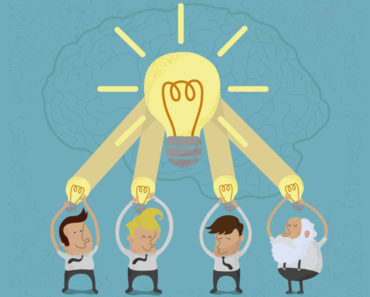Brainstorming Technique 8: Idea Grid
The eighth creative technique that we are going to look at is called the Idea grid. The idea grid is also known as the FCB grid or the Vaughn grid and was designed by Richard Vaughn, Senior vice president of Foote, Cone and Belding.
The grid helps decide why customers act the way they do and why they buy the products or services that they buy. The idea grid is a great tool for businesses entering into a new market, or for business to reposition their existing product. Sometimes, just by marketing a product or service differently can become the difference between success or failure.
The idea grid takes into account feelings, whether it is boredom, prestige, guilt, excitement or despair. Besides the basic necessities, all other purchases are based on feelings of customers.
Using the grid can allow you to know who you are selling to and why they are buying as well as explaining your product to a client. It is a great way to get a view from top.
Below is what the grid looks like:

The grid has four quadrants: 1, 2, 3 and 4.
The quadrants represents different behaviours and associations. On the left, we see the words High Involvement and Low Involvement, and on the top we see Think and Feel.
Here is what each means:
High Involvement: This involves products that are expensive or cost high like cars, boats, houses etc.
Low Involvement: This includes products that are low cost such as paper clips, or clothes or cutlery.
Think: Any product that requires the consumer to analyse, research and compare before deciding. For example, buying a mobile phone or camera.
Feel: Any product that is influenced by how a consumer feels about it. For example perfume. Buying a perfume is based on if the buyer personally prefers the scent. It is not based on specifications or other features.
So, when we look at each quadrant in isolation, we can map our services against the competition. The first step is to decide who our competition is or what we want to be different from. This can be done by educated guesses or preferably some soft research.
This is what to make of the quadrants:
Quadrant 1: High Involvement thinking purchase
Here the consumer needs information before buying. Feeling is also involved but the final decision will be based on logic rather than emotion. This includes purchases like health insurance life insurance etc.
Quadrant 2: High Involvement Feeling purchase
Here the consumer wants to buy to feed an emotion. This purchase still requires thinking as it is a high cost purchase, but it has to appeal more to the consumer’s pride, ego, style and other related factors. Buying a second car is not based on getting from point A to point B but about making a statement. This type of purchase would fall in this category.
Quadrant 3: Low Involvement thinking purchase
Here, the consumer is paying a low price, and not really thinking of his purchase. In fact he only gets to test his purchase after he has bought it. People do not mind buying the new detergent if it comes with a great offer, even if they have never heard of the detergent before or have proof of its cleaning abilities. But because it requires so little money, it requires little thinking. Household essential items fall into this category.
Quadrant 4: Low involvement feeling purchase
These are really low cost purchase that you don’t even need. They just make you feel good. For example, cookies are not required by us and we don’t really compare cookies for the best specifications. We just love their taste and yum factor. Ice cream and generally any comfort foods can fall in this quadrant. It is not limited to food of course. Any item of low cost, that you do not need to think about and buy just because it makes you feel a certain way.
An example
This time for the grid, we will take a real-world example of apple and how they set themselves apart than the rest, or at least how they began to do this.

Apple has always been revolutionary. When the first computers came out, they were massive, and were only used by experts. Computers were not devices for the masses. In fact the term “PC” or personal computers didn’t even exist until it was coined by apple.
Where the competitors of apple were selling to customers in Quadrant 1, where only the highest level of intellectual and company giants were investing and a high level of intelligence was required to operate these machines, Apple decided to be different. Apple wanted to be as far away from its competition as possible. They wanted to make computers affordable to all, and wanted to make them user friendly, so that anyone could operate one.
Even though Apple chose a low-involvement feel quadrant, it doesn’t necessarily made those products cheap. They were only in this quadrant compared to their main competitors in the computer business.
Apple found a hole in the market by differentiating itself and putting their products in a completely different quadrant.
Nowadays, we can say that apple has graduated to quadrant 2. It is still appealing to people’s hearts instead of minds, but is now considered a more expensive purchase than a Samsung, HTC or Huawei. Many products out there boast higher specifications and capabilities than iPhones, but Apple buyers are still loyal to the brand, because the user friendliness is still very much a reality. Apple has managed to stay in the feel quadrant for long.
The idea grid is a fantastic tool if you want to look for holes in the market. If there is a business you are getting into, you can study where the competitors are, and then put yourself in the quadrant farthest from them to create a similar product for a different market.
So the next time you are studying a market gap and looking for a niche, try the idea grid.






